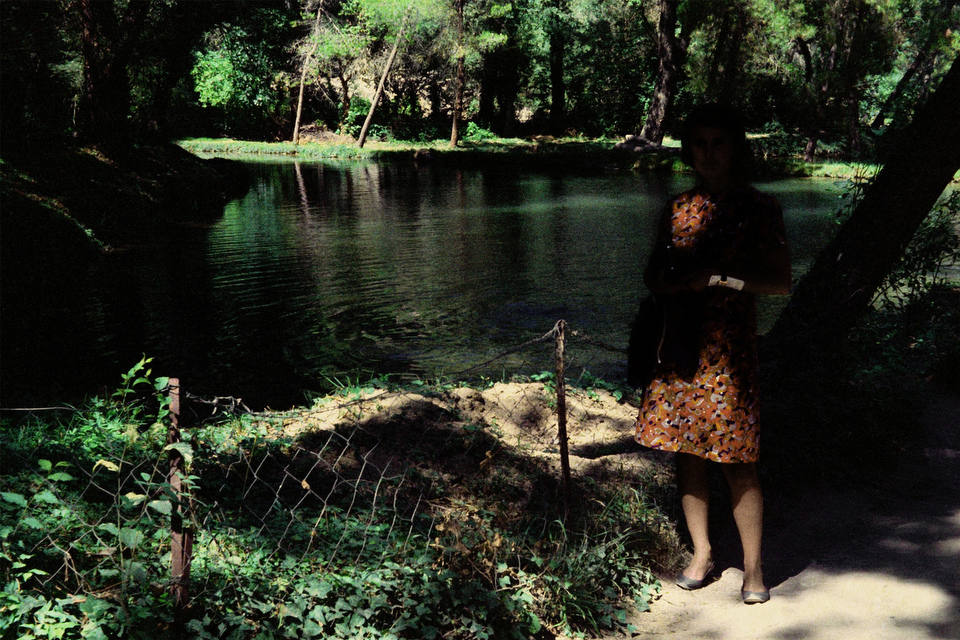
Memories for Keepsake: You – in Angel Albarran’s and Anna Cabrera’s Project

A friend gave us a set of negatives he found in the garbage. The most interesting photos among the negatives were underexposed and the faces of the people in the portraits were barely recognizable. These works formed part of the photographer’s identity and the identity of his characters. Consequently, we decided to use our own photographs along with the anonymous ones and to combine all of them into the same project titled “I have photos therefore I am”.
The title originated from the paraphrased Descartes’ sentence “cogito ergo sum” (“I think, therefore I am”). Descartes was talking about self-awareness, but the project was closer to the concept of self-identity: the distinctive characteristic belonging to any given individual, as well as the answer to the question “Who am I?” That’s why we decided to change the title to “This is you.” It’s the title we will also use for the photo book we are presently making based on this project.
{
“img”: “/wp-content/uploads/2014/08/memories_01.jpg”,
“alt”: “I Have Photos, Therefore I Am 1”
},
{
“img”: “/wp-content/uploads/2014/08/memories_02.jpg”,
“alt”: “I Have Photos, Therefore I Am 2”
},
{
“img”: “/wp-content/uploads/2014/08/memories_03.jpg”,
“alt”: “I Have Photos, Therefore I Am 3”
},
{
“img”: “/wp-content/uploads/2014/08/memories_04.jpg”,
“alt”: “I Have Photos, Therefore I Am 4”
},
{
“img”: “/wp-content/uploads/2014/08/memories_05.jpg”,
“alt”: “I Have Photos, Therefore I Am 5”
}
Sometimes we use film – 35mm, medium or large format, and go through a complete analogue workflow. We also scan the film, retouch it and end up with a digital print. Likewise, we can start with a digital or analogue+scanned source and thus create a pigment print on Japanese paper that we manually apply to a gold leaf layer. We use all that we have at our disposal to achieve the desired outcome which is real, physical photographs, and it doesn’t matter if you need to invent new processes or techniques to manage to get what you truly want to show.
Identity can be defined as the differentiating characteristic belonging to any given individual (self-identity), or shared by all members of a particular social group. In each case, it is composed of relatively permanent self-assessments.
For example, in Ridley Scott’s film “Blade Runner”, advanced humanoid androids, known as “Replicants,” based their “human” past on fake implanted memories. Their intelligence was magnificent, but not grounded in a larger cognitive context. Instead, they were programmed with memories so that they could feel more human. As their creator, Dr. Eldon Tyrell, explains to Harrison Ford’s Replicant character: “We began to recognize in them a strange obsession. After all, they are emotionally inexperienced with only a few years in which to store up the experiences that you and I take for granted. If we gift them with a past, we create a cushion or pillow for their emotions, and consequently, we can control them better.”
Replicants were obsessed with photographs. Whenever the Replicants couldn’t be completely sure of the validity of their own past, the pictures provided a physical connection to the implanted “cushion” of their memories.
{
“img”: “/wp-content/uploads/2014/08/memories_06.jpg”,
“alt”: “I Have Photos, Therefore I Am 6”
},
{
“img”: “/wp-content/uploads/2014/08/memories_07.jpg”,
“alt”: “I Have Photos, Therefore I Am 7”
},
{
“img”: “/wp-content/uploads/2014/08/memories_08.jpg”,
“alt”: “I Have Photos, Therefore I Am 8”
},
{
“img”: “/wp-content/uploads/2014/08/memories_09.jpg”,
“alt”: “I Have Photos, Therefore I Am 9”
},
{
“img”: “/wp-content/uploads/2014/08/memories_10.jpg”,
“alt”: “I Have Photos, Therefore I Am 10”
},
{
“img”: “/wp-content/uploads/2014/08/memories_11.jpg”,
“alt”: “I Have Photos, Therefore I Am 11”
},
{
“img”: “/wp-content/uploads/2014/08/memories_12.jpg”,
“alt”: “I Have Photos, Therefore I Am 12”
},
{
“img”: “/wp-content/uploads/2014/08/memories_13.jpg”,
“alt”: “I Have Photos, Therefore I Am 13”
}
When we look at a photograph related to our experiences, our memories surrender to the printed image. Certain photographs replace our abstract memories and certify our identity. They help us better
understand our surroundings.
In photography or any other subject, what really matters is to achieve the deepest understanding of everything you can. It is more useful than acquiring a specific education. In the book “Refractions, Thoughts on Aesthetics and Photography”, Ralph Gibson reflects upon photography while explaining that to have a consistent work as a photographer, you must first learn about photography, music, painting, architecture, semiotics, sculpture, philosophy, and new languages.
Photography can educate you in numerous subjects but you need to be attentive and observant. When you learn about something you didn’t know or discover a new way of thinking, suddenly you feel as if the world around you had changed. You feel as if someone explains you something for the first time.
New and best




